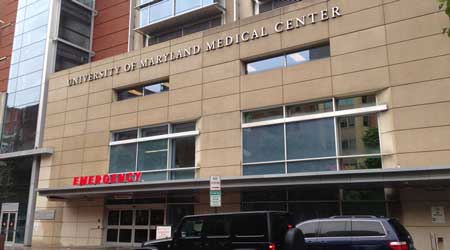Healthcare Facility Gears Up for Vaccine Distribution
As it continues to treat an influx of COVID-19 patients, the University of Maryland Medical Center takes begins the complicated process of vaccine distribution.
The University of Maryland Medical Center handled over 200 COVID patients in its 800-bed hospital when the numbers first began to rise in 2020. Cases went down during the summer, only to start creeping up again in November 2020, when Building Operating Management spoke to Richie Stever, director of operations and maintenance.
At first the hospital isolated the nursing unit and “either made the whole unit negatively pressurized to the adjacent spaces which didn’t let air leave that COVID ward, or we created an airlock where we were drawing air from the hallway and COVID unit into a center section which was then exhausted,” Stever says. Now the hospital is using “COVID pods or a cluster of rooms that has a visual barrier, meaning a wall surrounding those cluster of rooms.” Caregivers leave their head coverings on, which include masks and eye shields as they go from patient to patient because that is the best way to protect their mucus membranes—by keeping a seal around their heads. They change both their gown and gloves between patients.
The hospital is also gearing up for vaccination administration, which will be complicated by the fact that two of the vaccine frontrunners require two shots, 21 and 28 days apart, respectively. “We are trying to figure out how to do that effectively,” Stever says. While it will be easy to track people in the hospital’s care, it will be more difficult when patients have been to another institution. People must get the second dose within the prescribed time, and vaccination types cannot be mixed and matched.
According to Stever, his facility expected to get the first doses of vaccine by mid-December, provided they were approved by the FDA, and the hospital was preparing for delivery. The Pfizer vaccine requires a temperature of negative 70 degrees Celsius, which means a pharmacy would need special equipment to hold the doses. “My system has already purchased four of those freezers in anticipation of the vaccine coming out,” Stever says. The other mRNA vaccine, from Moderna, can be held in a regular freezer, since it requires a temperature of 20 degrees Fahrenheit.
Maryellen Lo Bosco is a freelance writer who covers facility management and technology. She is a contributing writer for Building Operating Management.
Related Topics:










